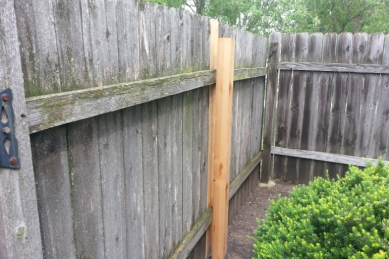
A biscuit joining tool is a tool to join pieces of wooden wood together. A saw blade is used to cut a hole in the wood, and then drop in the compressed wood biscuits. These biscuits expand when glue is applied. The most common use for a biscuit joiner is edge-joining panels. Norm abram glues his panels with a biscuit joininger.
A biscuit joiner is able to cut grooves in most sizes of biscuits. Most biscuits are available as 1-3/4" by 5/8" sizes. A smaller biscuit joiner, with a 2-inch blade, is ideal for smaller projects. You can use a biscuit joiner to create cabinet face frames. It will also strengthen weak endgrain joints. If you plan to use a biscuit joiner on a large-scale project, choose a larger size.
Use a biscuit jointer by aligning the biscuit jointer with your layout line. Make sure it's flush with the board's surface. After the biscuit jointer has absorbed enough glue, it will shrink slightly. The biscuit joiner should be placed on the face frame so that it is properly aligned with the board. Push the biscuit joininger until it stops.
The main advantage to using a biscuit joiner for making joints is their ease-of-use, which is strong and solid. The downside is that biscuit joints may not be as strong or as sturdy as conventional joinery. These joints are not recommended for heavy-duty use, but they are strong enough to make cabinets. It is also very easy to use, and completely hidden. You can use a biscuit joiner in solid wood or thin particleboard.

FAQ
What is the cost to renovate a house?
Cost of renovations depends on the material used, how large the job is and how complex it is. Certain materials, such as wood, require special tools like drills and saws. Others like steel don't. The price of renovations will depend on whether you need your contractor to do everything or if the work is done by you.
The average cost of home improvement projects ranges from $1,000 to $10,000. The cost to hire professionals would be anywhere from $5,000 to $25,000. You could also spend as much as $100,000 if you do it all yourself.
You should know that there are many factors which determine the final cost of renovation. They include the type of material used (e.g. Brick vs. concrete, the project's size, the number and duration of workers, etc. These are important considerations to remember when estimating total renovation cost.
What should I fix first when renovating a house?
You must first clear out the clutter outside and inside your home. Next, clean out any moldy areas. Finally, you need to clean off the exterior surfaces and apply fresh paint.
Is it more cost-effective to hire a subcontractor or a general contractor?
A general contractor will usually cost more than a subcontractor. A general contractor often has many workers, which means they can charge their clients more for labor. A subcontractor, on the other hand, only hires one worker, and charges less per hour.
Can I renovate my whole house myself?
If you can do it yourself, why pay someone else when you could save money and time?
It doesn't matter how much you love DIY, there are times when you simply cannot do it yourself. There could be too many variables to manage.
A qualified electrician would be required to check the safety and reliability of your electrical system if you live in an older house.
It is possible that your renovations might cause structural damage.
You may not have the proper tools to complete the job. For example, if your goal is to install a new sink in your kitchen, you will need to purchase a plumber’s snake, which is designed to clear blocked pipes.
Plumbing codes also require that you have a licensed plumber work on your project.
You need to be able to do the job before you take on any large tasks.
If you are unsure whether you can tackle the job yourself, ask for help from friends and family members who have done similar projects before.
They can help you determine the right steps and where you can find out more.
Statistics
- Rather, allot 10% to 15% for a contingency fund to pay for unexpected construction issues. (kiplinger.com)
- They'll usually lend up to 90% of your home's "as-completed" value, but no more than $424,100 in most locales or $636,150 in high-cost areas. (kiplinger.com)
- It is advisable, however, to have a contingency of 10–20 per cent to allow for the unexpected expenses that can arise when renovating older homes. (realhomes.com)
- ‘The potential added value of a loft conversion, which could create an extra bedroom and ensuite, could be as much as 20 per cent and 15 per cent for a garage conversion.' (realhomes.com)
- On jumbo loans of more than $636,150, you'll be able to borrow up to 80% of the home's completed value. (kiplinger.com)
External Links
How To
Where can I get information on home improvements?
Home improvement projects are an excellent way to save money while improving your home. You can make your home look better without spending too much money. Some ideas include painting, landscaping, and even adding a hot tub. If you are interested in making these changes, there are many resources online that can help you decide which project is right for you.
The internet contains a wealth of information about home improvement projects. Many websites provide detailed instructions to help you complete different tasks. You can often see completed projects on these sites so you can imagine how your own home would look once each task has been completed.
You may also find articles written by professionals about topics related to home improvement. You might find a magazine article on the best paint for walls. This article could provide tips on choosing colors or types of paints to complement your existing decor.
Websites that offer advice and suggestions on home improvement are also available. Houzz.com (and Pinterest.com) are great sites for learning about home renovation projects. Each website provides helpful information about products and services that may interest you.
Some websites only focus on home improvements. Lowe's.com can be used to look through its catalog of tools, materials and supplies for home improvement projects. You may also find useful information on how to choose and install window treatments.
Home improvements can be exciting, rewarding, and fun. You can make your home more beautiful by learning about them.